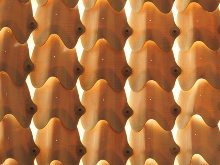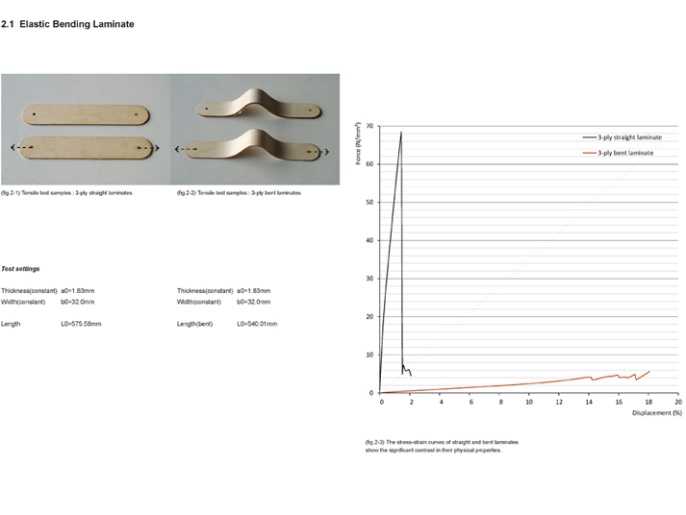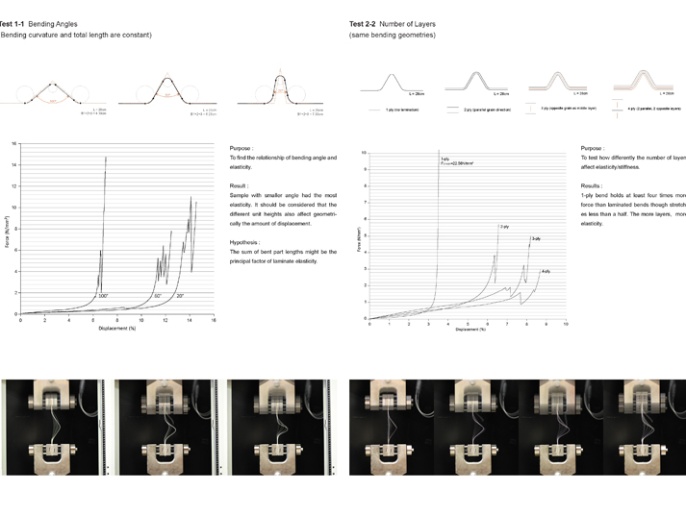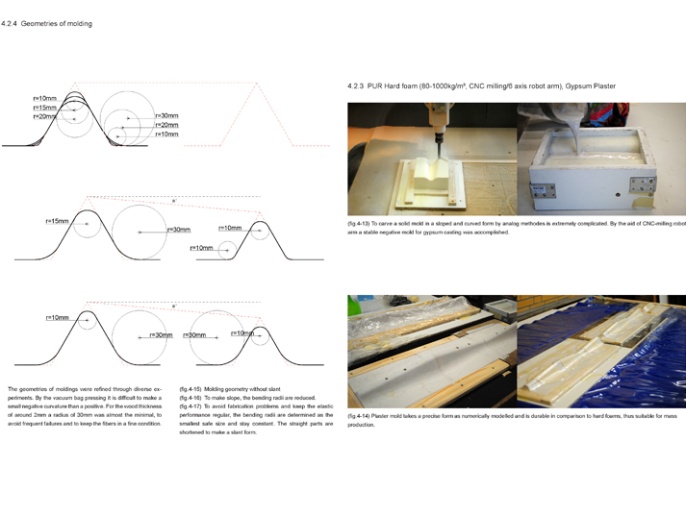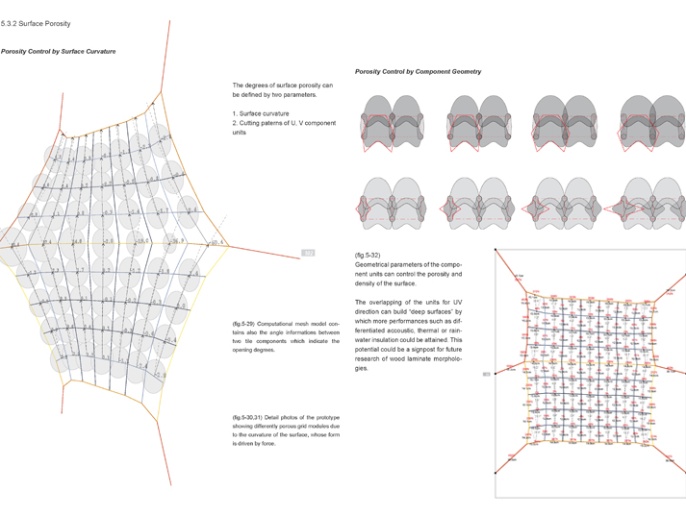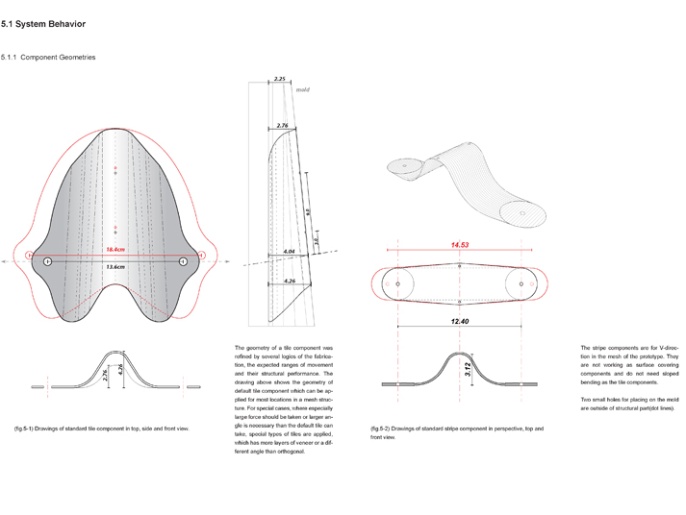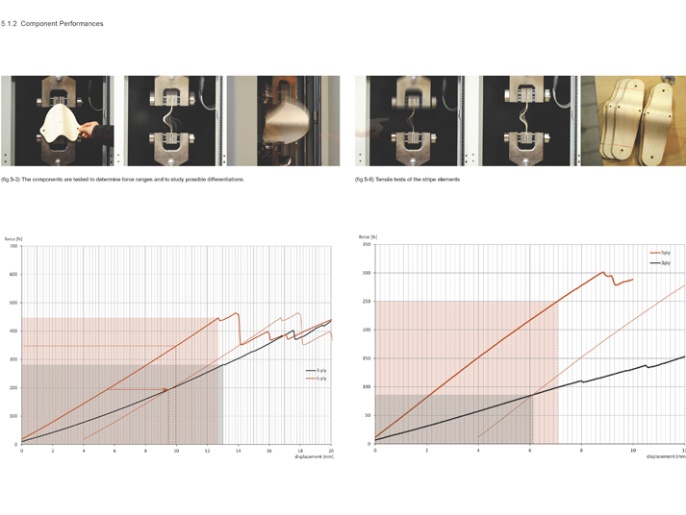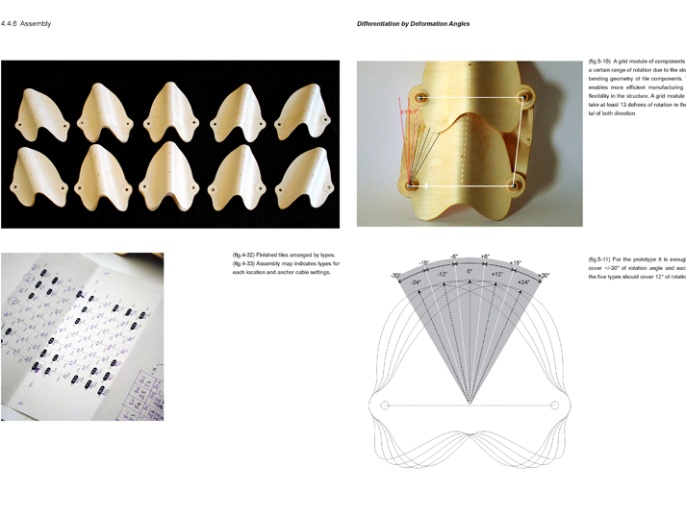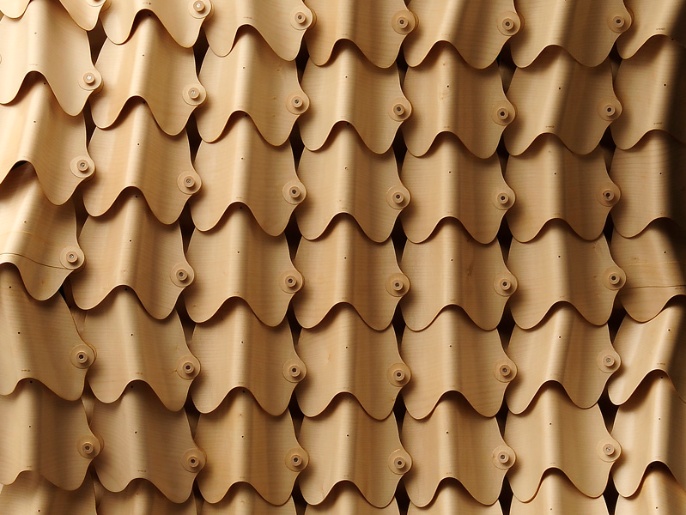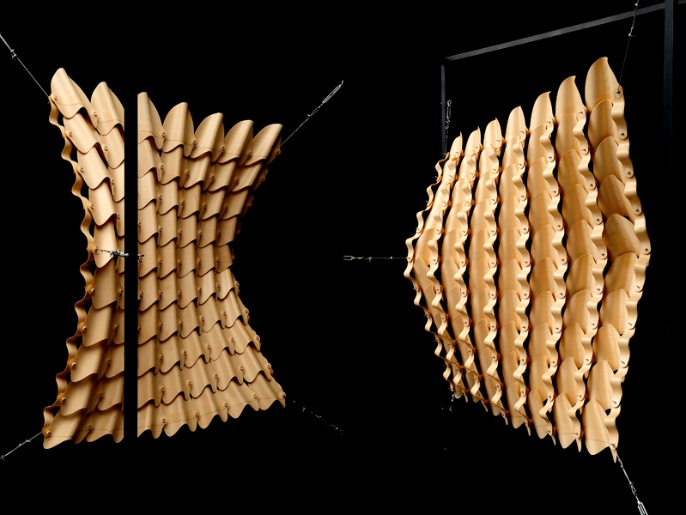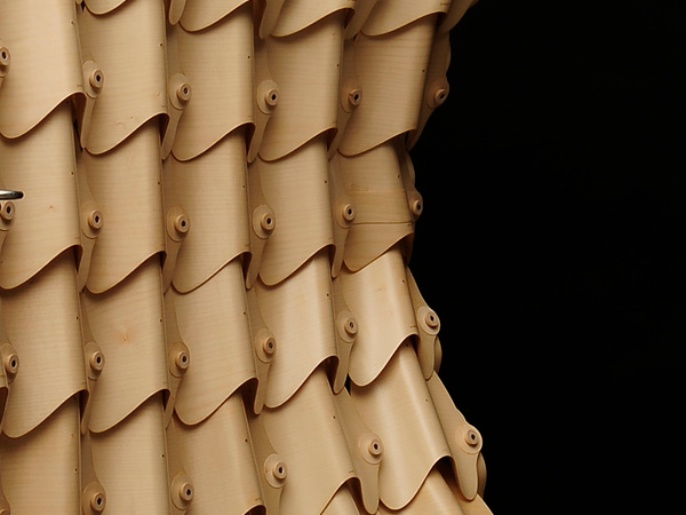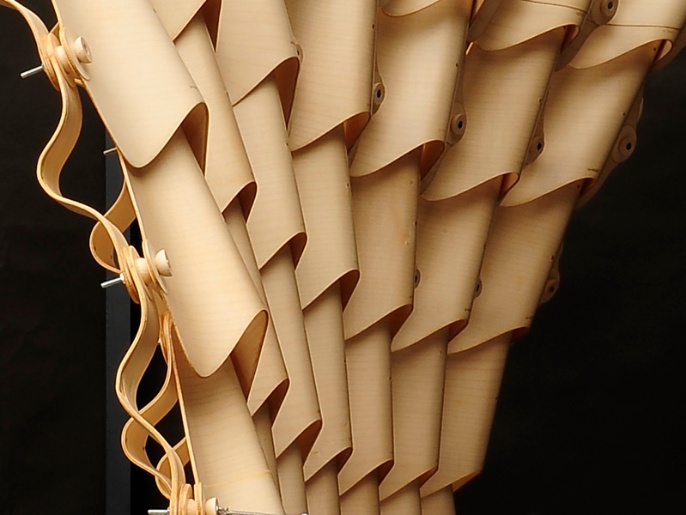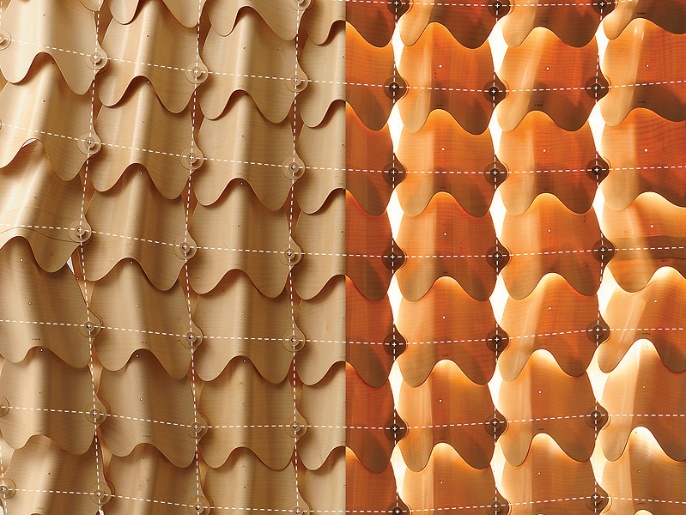Differentiated Tensile Wood Laminate Morphologies
This diploma project investigates a component-based wood-laminate material system which organizes itself as a form-active tensile structure with differentiated surface articulation. This material system functions, in concept, akin to a lightweight tension-active cable-mesh structure, yet the "cables" are materialized as laminated wood-veneer surface elements which deflect differentially according to the bi-axial force flow. The research focuses primarily on the instrumentalization of curved wood-laminate geometries being transformed through manipulation of geometry and fiber orientation into deform-able elastic modules capable of maintaining a tensile load. The methodology stresses the calibration of manufacturing processes through exhaustive analytical testing of physical material constructions for material stiffness (elasticity).
The fabrication methods and tools are developed through a series of diverse and exhaustive lamination tests with various geometrical settings and different types of wood glues. Lamination is accomplished through the use of vacuum bag pressing. The results are evaluated by tensile tests using the faculty’s material testing machines.
A module for each unit consists of two types of interconnected elements, each representing the primary U and V force flow directions. Computationally, the force distribution is defined through a simple grid of particles and springs. While both elements of the module work together as a tensile surface structure, the U-direction members serve to define the primary surface. The V-direction elements provides beneficial flexibility in construction and structures to allow for overall arrangements with different deformations caused by local tension forces. Both elements are calibrated through the fiber directionality of the veneer and the curved geometry to the force description defined by the computational model. The crux of this research is in defining this highly specific translational step between a simplified spring model, a materialized module, and assembled force-active surface structure.
The final prototype is described using by five differentiated module types. Within the five module types, a given safe rotation range of 12 degrees is possible, discovered through rigorous testing of assembled, neighboring modules. In order to extend the tensile loading (via elasticity) of wood-laminate modules, two differently stiff compositions are used. Stiffer laminates utilizing more veneer layers with an altered fiber orientation are applied for some modules at the edge. Computationally, the description of these modules integrates force description from the springs model with the analytical data from physical testing to produce a mapping for the geometry and the fiber orientation.
The continuously varying surface curvatures make different opening degrees between overlapping tiles. Through the methods established in this research, the differentiated porosity becomes predictable and controllable from through the simplified particle-spring model and translational steps for materialization. Additionally, parametric changes of the cutting patterns for the U and V elements within each modules may allow for wider range of enclosure performances and further depth in the surface structure.
Differentiated Tensile Wood Laminate Morphologies is the Diploma project of Bum Suk Ko, completed in the Summer Semester 2012. Bum Suk's project was selected as the Honorable Mention for the Diploma Prize for the among the 100 projects submitted in this term. The work was supervised by Prof. Achim Menges and Sean Ahlquist of the ICD.
ICD Diploma Project 2010: Differentiated Tensile Wood Laminate Morphologies
Bum Suk Ko
Thesis Adviser: Sean Ahlquist
Thesis Supervisor: Prof. Achim Menges
This diploma project investigates a component-based wood-laminate material system which organizes itself as a form-active tensile structure with differentiated surface articulation. This material system functions, in concept, akin to a lightweight tension-active cable-mesh structure, yet the "cables" are materialized as laminated wood-veneer surface elements which deflect differentially according to the bi-axial force flow. The research focuses primarily on the instrumentalization of curved wood-laminate geometries being transformed through manipulation of geometry and fiber orientation into deform-able elastic modules capable of maintaining a tensile load. The methodology stresses the calibration of manufacturing processes through exhaustive analytical testing of physical material constructions for material stiffness (elasticity).
The fabrication methods and tools are developed through a series of diverse and exhaustive lamination tests with various geometrical settings and different types of wood glues. Lamination is accomplished through the use of vacuum bag pressing. The results are evaluated by tensile tests using the faculty’s material testing machines.
A module for each unit consists of two types of interconnected elements, each representing the primary U and V force flow directions. Computationally, the force distribution is defined through a simple grid of particles and springs. While both elements of the module work together as a tensile surface structure, the U-direction members serve to define the primary surface. The V-direction elements provides beneficial flexibility in construction and structures to allow for overall arrangements with different deformations caused by local tension forces. Both elements are calibrated through the fiber directionality of the veneer and the curved geometry to the force description defined by the computational model. The crux of this research is in defining this highly specific translational step between a simplified spring model, a materialized module, and assembled force-active surface structure.
The final prototype is described using by five differentiated module types. Within the five module types, a given safe rotation range of 12 degrees is possible, discovered through rigorous testing of assembled, neighboring modules. In order to extend the tensile loading (via elasticity) of wood-laminate modules, two differently stiff compositions are used. Stiffer laminates utilizing more veneer layers with an altered fiber orientation are applied for some modules at the edge. Computationally, the description of these modules integrates force description from the springs model with the analytical data from physical testing to produce a mapping for the geometry and the fiber orientation.
The continuously varying surface curvatures make different opening degrees between overlapping tiles. Through the methods established in this research, the differentiated porosity becomes predictable and controllable from through the simplified particle-spring model and translational steps for materialization. Additionally, parametric changes of the cutting patterns for the U and V elements within each modules may allow for wider range of enclosure performances and further depth in the surface structure.
Differentiated Tensile Wood Laminate Morphologies is the Diploma project of Bum Suk Ko, completed in the Summer Semester 2012. Bum Suk's project was selected as the Honorable Mention for the Diploma Prize for the among the 100 projects submitted in this term. The work was supervised by Prof. Achim Menges and Sean Ahlquist of the ICD.
ICD Diploma Project 2010: Differentiated Tensile Wood Laminate Morphologies
Bum Suk Ko
Thesis Adviser: Sean Ahlquist
Thesis Supervisor: Prof. Achim Menges


